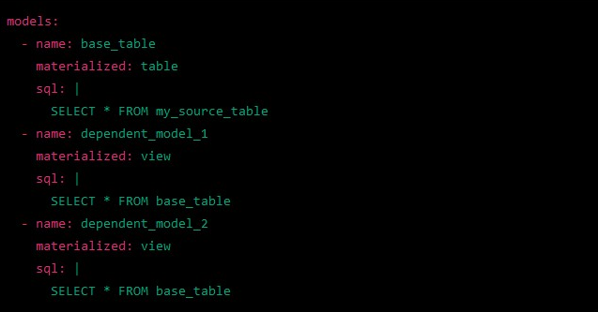One of the key features of DBT is the ability to control the execution order of your SQL transformations using “model timing”. Model timing determines when a particular model runs during the DBT workflow. There are three model timing options in DBT:
💡 ‘pre-hook’: runs before any other model.
💡 ‘post-hook’: runs after all other models.
💡 ‘materialized’: runs after the model(s) it depends on.
Here are some examples of how you can leverage DBT’s model timing:
- Pre-hook example: Let’s say you want to create a temporary table before any other models run. You can create a pre-hook model to do this, and set its ‘
model_timing’property to ‘pre-hook’. For example:
models:

In this example, the ‘temp_table’ model will run before any other models in the project.
- Post-hook example: Let’s say you want to run a model that depends on other models and generate a report after all the models have run. You can create a post-hook model to do this, and set its ‘model_timing’ property to ‘post-hook’. For example:

In this example, the ‘final_report’ model will run after all the other models have run.
- Materialized example: Let’s say you have multiple models that depend on the same base table. You can use the ‘materialized’ model timing to ensure that the base table is created before the dependent models run. For example:

In this example, the ‘base_table’ model will be materialized as a table before ‘dependent_model_1’ and ‘dependent_model_2’ are materialized as views. This ensures that the base table is available to the dependent models when they run.
By leveraging DBT’s model timing, you can create a flexible and efficient data transformation workflow that ensures your models run in the correct order and with the correct dependencies.
